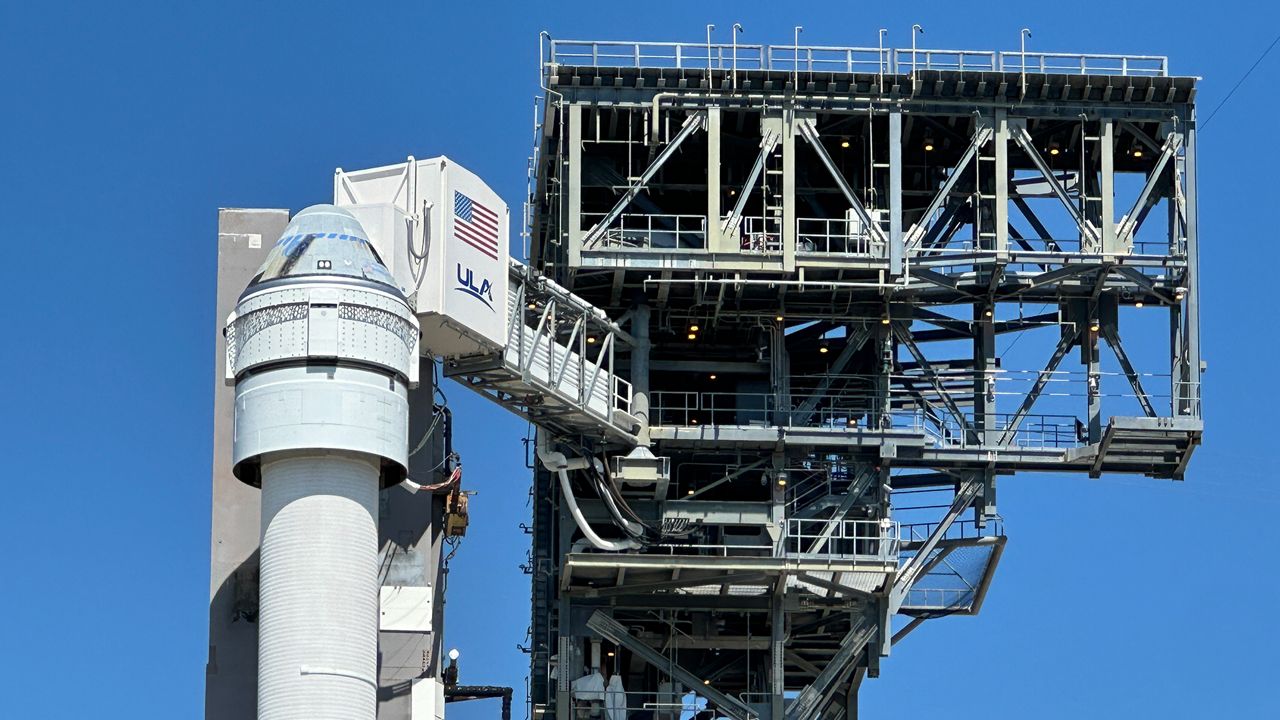CAPE CANAVERAL SPACE FORCE STATION — There is no new return date for the Boeing Starliner and its two astronauts as teams are still going over data to have a better understanding of the leaks and thruster issues, stated NASA and Boeing officials on Friday.
What You Need To Know
- The Boeing Crew Flight Test mission has seen a series of issues from leaks to thruster performance
- NASA and Boeing officials tell Spectrum News that the two NASA astronauts will return home on Starliner
- Get more space coverage here ▶
- 🔻Scroll down to review the timeline of the mission and the issues🔻
During a teleconference, both NASA and Boeing officials recapped the issues that have followed Boeing’s Starliner maiden crewed flight, like the five helium leaks discovered in a flange of the spacecraft’s service module’s thruster system. These leaks are believed to be caused by a faulty seal.
And there is the issue with one of the five aft reaction control system thrusters that maneuver Starliner to and from the International Space Station. All five failed during the approach of the space station on Thursday, June 6, but officials were able to conduct a hot-fire test, which four of the five were re-selected and working. The fifth has been left de-selected for the remainder of the mission.
NASA’s Commercial Crew Program Manager Steve Stich said they plan to put an end to NASA astronauts Butch Wilmore and Suni Williams’ prolonged stay on the International Space Station, but shared there is no new date for them to undock.
Despite the problems, Stich assured that “their spacecraft is working well” and the astronauts are having a good time, conducting tests on the Starliner and speaking with family.
“I want to make it very clear that Butch and Suni are not stranded in space,” he said, addressing the rumors and comments from space reporters and space fans who for weeks wonder when the pair will return home.
After delays in launch, the two experienced astronauts took off on Wednesday, June 5, for the ISS, which they docked with the following day.
The pair of seasoned astronauts were supposed to stay on the International Space Station for a minimum of eight days but have found that their return home has been pushed back a couple of times due to the helium leaks and thruster issues.
Stich said the extra time staying docked to the space station is important for team members to study the leaks and thruster, because Starliner’s service module will detach from the crew module and burn up during re-entry.
He stressed that team members want to collect as much data as possible before the module is destroyed.
At one point during the teleconference, Spectrum News asked if NASA and Boeing considered leaving the Starliner docked on the space station to allow the teams enough time to collect data and have Wilmore and Williams return back to Earth on another space capsule, like Russia’s Soyuz or SpaceX’s Dragon which are both at the floating laboratory.
“Right now, we are focused on returning Butch and Suni on Starliner. Obviously, we have luxury of having multiple vehicles and we‘ve worked contingency plans for lots of different cases, but right now, we are really focused on returning Butch and Suni on Starliner,” Stich answered.
Boeing’s commercial Crew Program Vice President and Program Manager Mark Nappi also answered, saying, “I see no reason to do anything differently as well. And I think we just need to reiterate the vehicle is safe for return.”
These issues may delay the certification of spacecraft and the crewed Starliner 1 mission in 2025, officials said.
What is being done
While teams back on Earth are poking holes in seals like the ones on the Starliner to test the leak rates, which officials have assured there is enough helium to return the astronauts, Stich also shared that teams will be conducting a test firing of a new thruster at the White Sands Test Facility in New Mexico.
This will give teams an idea of what to look for and expect since this is the same type of thruster on the Starliner.
Only when the testing is completed and the data looked over will a new landing date will be considered, he said.
“We don’t have a targeted date today,” Stich said on Friday.
He said the Starliner’s batteries have a shelf life of 45-days but have been recharged on the space station.
A timeline of the Boeing Crew Flight Test mission
The maiden crewed mission has seen a series of issues, from launching to docking and attempting to return home.
Here is a timeline of the issues that has troubled the mission.



